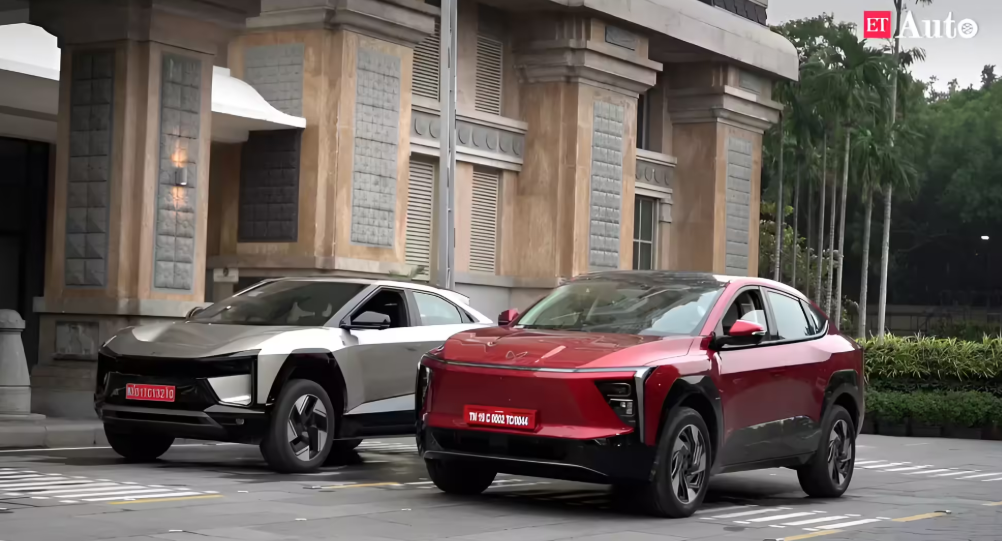 Rajesh Jejurikar
Rajesh JejurikarAs Mahindra & Mahindra begins putting the building blocks in place for a larger global play in the coming years, Rajesh Jejurikar, Executive Director and CEO (Auto & Farm Sectors), is absolutely confident that India is “uniquely placed” at the moment.
“This is because we have done now enough as a country — enough vehicles to know auto — but not so much by which it is very hard to change and adapt. What I mean by that is we have the ability to learn very quickly because we are still on the learning curve. And, hence, compared to some parts of the world, especially the western world, our ability to adapt and learn and grow is faster,” he elaborates.
This is what is now happening in the Indian ecosystem, where “you are seeing” very good innovation coming at excellent costs because India now has the technical and software prowess to do cutting-edge work.
“And we are not making cars for the first time. So we have the ability to blend enough knowledge of the past with enough flexibility to adapt to a new way of doing things,” says Jejurikar.
In a way, that is what M&M has seen happening with its more recent electric vehicle portfolio, where “we have been able” to create really cutting-edge products at accessible prices.
“And I think that is what the future is of the Indian ecosystem. While China has made some great moves, we think so has India. We will see a lot coming out of India for the world, irrespective of whether it is an Indian or a non-Indian company. But the ecosystem is going to produce a lot for the world,” reiterates Jejurikar.
 Mahindra Thar Roxx
Mahindra Thar Roxx Technological capability
Clearly, the country is not anywhere near the scale of larger international markets, but, as he makes clear, “I am commenting on how ready we are” from a technological capability perspective, not from a market success perspective. In global markets, Indian companies so far do not really have a presence, and the process of building that is about creating brands, channels, and so on.
So one of the segments that we think there is an opportunity for us to grow in, is the less than 4 metreRajesh Jejurikar
This, according to Jejurikar, will take 3-5 years, and “we have to be prepared” to make that effort over this timespan. For instance, in markets like South Africa, where M&M has been around for a few decades, it is seeing success with newer products because of its brand presence, dealership network, ecosystem of people, service capability, parts capability, etc. “So when you are able to put products through that, you start seeing success. Now that is going to take time to build in other countries where we do not have a presence. So that is why for us, international is not a one-day switch-on switch, where you say, ‘Okay I want to be global’ and then you are global in the next six months,” explains Jejurikar.
On the contrary, this is a process that will take years, and “we have to have the patience” to do it in a calibrated manner, not in a “yes let’s go gung-ho on international because that is the flavour of the month”.
New platform promises plenty
The NU_IQ platform, in a way, is setting up M&M to get a strong continuing portfolio post-2027. Many of the current products will continue, but the company still thinks there is an opportunity (for products) which can help grow some segments.
“So one of the segments that we think there is an opportunity for us to grow in, is the less than 4 metre. And that is why some of the NU_IQ concepts/platform are in the subcompact. We also think that an extension of that idea can be global,” says Jejurikar.
In a way, this is a platform that will be fuel-agnostic, handling diesel, gasoline, and electric, which means greater flexibility that will allow the company to play in a larger product market.
Right now, the 4.4 to 4.7 metre SUV category is really M&M’s bigger strength, relative to the less than 4 metres. So the NU_IQ is a move in that direction to “redefine how to play in this segment” as a very conscious growth strategy.
The fact that GST levies in the sub-4 metre space are now down to 18 per cent from 28 per cent will be an added shot-in-the-arm for M&M, given the products the NU_IQ platform will spawn going forward.

Design, technology and product mantra
According to Jejurikar, brands are more important in the auto space than in many other categories of technology and products. “And when I am saying technology and product, I am adding design as a critical ingredient in that,” he says.
Eventually it is the product and the design which is building a brand. And I think that is what has really worked for us especially over the last five years of our evolutionRajesh Jejurikar
When OEMs get this equation right — design, modern technology that includes software, and products customers wait for — that is effectively what building a brand is about. Marketing plays a minimal role in this exercise compared to the roles of product and design.
“Eventually it is the product and the design which is building a brand. And I think that is what has really worked for us especially over the last five years of our evolution. The products that we have launched have been brought to market in an interesting way which has created intrigue and curiosity,” explains Jejurikar.
The proof of the pudding is how well those products were received, and the kind of customers the company has been bringing into its fold, especially the younger generation, who are probably not burdened by legacy baggage/expectations. Mahindra is now a brand which connects with them emotionally.
We are not utilitarian but a life experience. And the product is consistent with the message and the position that we wanted the brand to occupy. So I think these two have to go well togetherRajesh Jejurikar
Making the right connect
“We are not utilitarian but a life experience. And the product is consistent with the message and the position that we wanted the brand to occupy. So I think these two have to go well together because if they don’t, then there is a disconnect in customers’ minds about who is this,” he continues.
Hence, if on the one hand, “you say I am known for ‘X’ but the customer is experiencing ‘Y’, then there is a disconnect”. Sometimes when brands are spread too thin, it becomes very hard to own a unique space, says Jejurikar.
This puts in context why M&M has consciously chosen to stay focused and own a space where all products should deliver. It has also recalibrated the word ‘rugged’ to mean on-road presence.
“So when you see a Mahindra on the road, it must have a certain presence. We may have a Thar which looks tough and rugged, but we will also have a XEV 9e which has presence,” reiterates Jejurikar.
Evolution of the brand identity
The operating words are on-road presence and head-turning design, which represent an evolution of tough, rugged design. “So we do not use the word tough and rugged as a part of design philosophy anymore,” he says.
This redefinition of the terms happened in 2020, when the team “kind of introspected” on how the brand could differentiate itself and remain distinctive, and on how it had to connect with the past while still “taking us” into the future.
“So the evolution of our DNA was a set of things that we called as brand purpose and that is about making authentic adventure-ready vehicles. Everything that we do is around that and this has then been broken into key product attributes, one of which is head-turning design, on-road presence, sophistication, safety etc. So now everything that we design or develop has to cross that filter,” explains Jejurikar.
The key is to have a 360-degree approach, and the thing “you have to avoid” is to assume that customers want this particular something. “That is not how you design or that is not how you develop because most customers rarely know what they want three years from now or four years from now,” he says.
Everything that we do is around that and this has then been broken into key product attributes, one of which is head-turning design, on-road presence, sophistication, safety etc.Rajesh Jejurikar
Getting critical inputs
This then becomes the M&M team’s job to figure out what will work for them. So the process is about understanding the social context, how lifestyles are evolving, and the role “we want to play” in a consumer’s life.
It is not about ‘do you want a vehicle which is going to look like this?’ because the customer does not have the faintest idea. Hence, any feedback on product design is provided only to a very, very select set of consumers who understand the future.
“Sometimes they may be kids, designers, architects, fashion designers or whatever. It is people who are seeing the future and not customers of today who can rarely tell you what will happen four years later or what they will want then,” elaborates Jejurikar.
The way to do it, therefore, has to be much more judgmental and intuitive, based on multiple conversations and not expecting feedback in a quantitative survey.
How EVs have boosted brand perception
The foray into EVs “certainly elevated” the overall brand perception because customers did not expect Mahindra to bring in such high levels of technology and design that could look really competitive on a global scale.
Over 80 per cent of people who bought the EVs were formerly non-Mahindra owners.
“So we are getting a totally different customer profile, many of whom are coming from luxury car segments. I think it is definitely playing a very major role in our brand evolution as well,” says Jejurikar.
While there is a startup ecosystem which the product development teams work with, the company relies much more on technology that suppliers are able to build in. “A lot of technologies come from suppliers and they have built that innovation ecosystem which they are able to bring to us,” he adds.
Coping with volatility
Asked about the challenges of operating in a volatile world, Jejurikar believes this is the new normal and, beyond a point, leaders and organisations must have the agility and resilience to handle it.
“We have gone through multiple such things starting with the chips shortage during Covid, the rare earth crisis in recent months, the wild inflation in commodity prices and we have lived through all of that,” he says.
The strength lies in “how you respond at short notice” to changes, and here is where strong organisations can move with speed and agility to what the need of the hour is. “We cannot wish away volatility but the key is to work in such a way that we can convert every such event into an opportunity rather than get overwhelmed and see it as a threat,” says Jejurikar.



